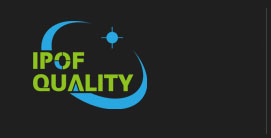
At present, global energy is becoming increasingly scarce. The United States and the European Union have successively launched a series of energy efficiency regulations and energy conservation plans, the most common of which are Energy Star in the United States, CEC in California, and Energy Efficacy in the European Union. Products with corresponding energy efficiency certification are favored by consumers in the European and American markets, and have broad prospects.
US Energy Star
Energy Star is an energy efficiency testing program jointly launched by the US Department of Energy and the Environmental Protection Agency. It covers all consumer products that use grid power. The most common ones include compact self-rectifying fluorescent lamps (CFLs), indoor and outdoor fixed lamps (RLF), power adapters, audio/video/IT.
As early as the end of the 20th century, KTS began to provide Energy Star testing services. With high quality and efficient services, KTS has successfully assisted many domestic manufacturers to apply for Energy Star certification, and has been recognized by the US Environmental Protection Agency as the world's six energy Star market testing services. One of the laboratories.
Applying for the US ENERGY STAR prerequisites requires that the product meet UL, FCC certification. KTS can provide customers with one-stop service for FCC/UL/Energy Star testing and certification.
California CEC
CEC is the energy efficiency requirement for consumer products that enter all grid power supplies in the California market. KTS has been authorized to perform this test and is qualified to provide relevant tests and reports to clients.
EU Energy Efficacy
The European Union Energy Efficacy is an energy efficiency requirement for consumer products that enter all grid power sources in the European market. KTS has been the first to offer such testing services to many customers.
EU regulations: All electronic products sold in Europe must meet energy requirements (European Energy Labeling Program)
Related energy certification directives:
2000/55/EC - Requirements for energy efficiency testing of fluorescent lamp ballasts. (Testing standard: EN50294:1998)
98/11/EC - Requirements for energy labeling of household lamps. (Testing standard: EN50285:1999)
2003/66/EC - Energy efficiency requirements for refrigerators, freezers and refrigeration equipment. (Testing standard: EN153:2006)
2002/31/EC - Air Conditioning Energy Efficiency Labeling Directive. (Testing standard: EN14511 series)
2002/40/EC - Electric oven energy efficiency labeling directive. (Testing standard: EN50304: 2001)
95/13/EC - Energy Labeling Directive for Household Dryers. (Testing standard: EN50229:2007)
97/17/EC - Dishwasher Energy Labeling Directive. (Testing standard: EN50242:1998)
92/75/EEC – Framework Directive for Energy Labeling for Household Appliances.
EU Green Lighting Energy Label:
The EU indoor workplace lighting standard is: EN12464-1 (office and public places) lighting test standards.
The British standard is: 8206-2:2008 Fully known as building lighting, daylighting regulations.
EN13032-1 test (EU lighting performance test requirements)
EN13032-6 Tunnel Light Detection
EN13032-3 Emergency Light Detection
EN13032-4 Motion Light Detection
1. Energy consumption label
The 98/11/EC-Household Lamp Energy Label for Energy-Efficient Light Bulbs is an important part of European energy efficiency policy. Add value to certified energy-saving lamps by certifying lighting performance, luminous flux (lumen), service life (hours), and energy efficiency rating (A, B, C, D, E, F, G). According to the performance standard EN/IEC 60969 plus energy efficiency test, you can prove that your energy-saving lamp is in compliance with Directive 98/11/EC, and put an energy-efficient label on your product.
2. Photometric determination
Photometric performance testing provides manufacturers with specific data such as light output, density distribution and critical angle illumination. Using the appropriate test instrument (metering angle meter), the test provides reliable data based on the EN13032-1 harmonized standard for all end users.
The photometric performance test mark is a third-party certification for the owner, from the manufacturer to the final lighting designer. It demonstrates the accuracy and consistency of the illumination data required to determine the number and location of lights in an environment, meeting lighting requirements in accordance with national regulations and specific European and international standards. The photometric performance mark is another added value of Chinese lighting products to the European market.
3. Ballast performance test
The electronic ballast is tested in accordance with EN60929, inductive ballasts in accordance with EN60921.
For example, EN60929, the main test items include:
- Start condition
- working conditions
- line power factor
- supply current
-Introduction of cathode maximum current
- current waveform
-magnetic shielding
- Audio blocking
- Power transient overvoltage
- abnormal state test
- durability test
4. Energy efficiency index (EEI)
In order to reduce greenhouse gas emissions, Europe introduced the Energy Efficiency Directive 2000/55/EC on September 18, 2000. The CELMA (European Federation of National Manufacturers Association) has established seven energy efficiency indexes for this purpose: A1, A2, A3, B1, B2, B3, C and D. The D level has been banned since 2002, and the C level is also It was eliminated on November 21, 2005.
We will align the performance standards of the ballast with the EN50294 standard and issue performance +EEI markings for the matched ballasts.
